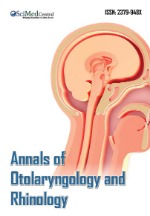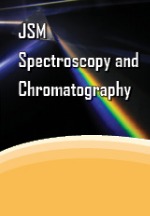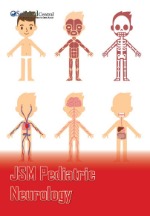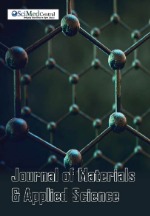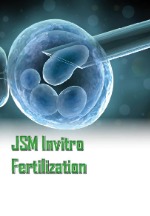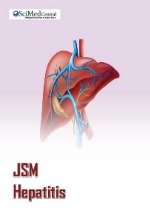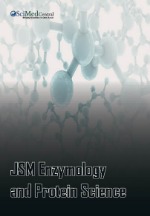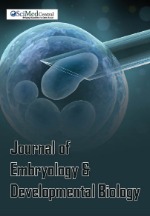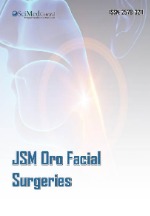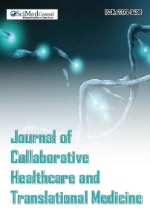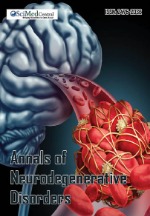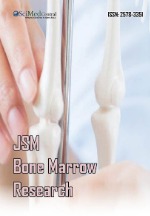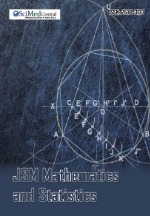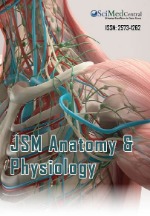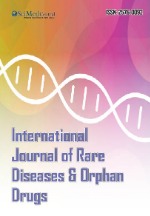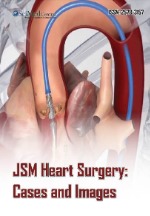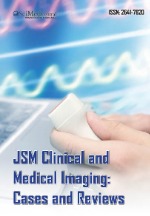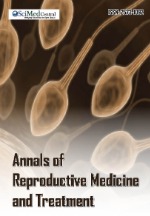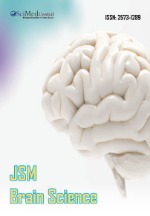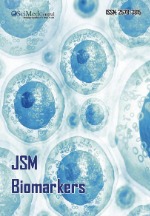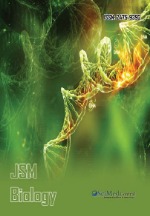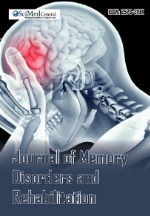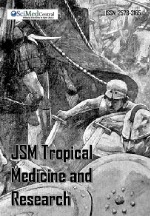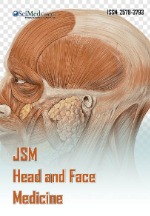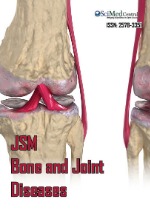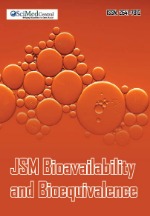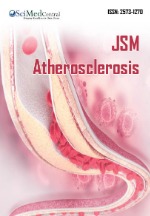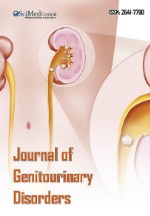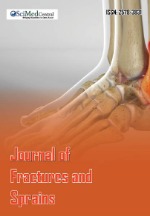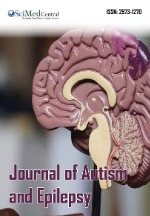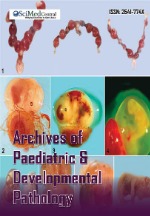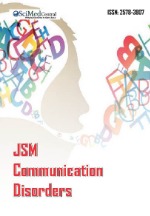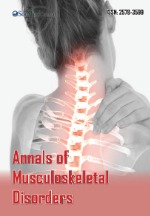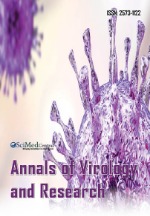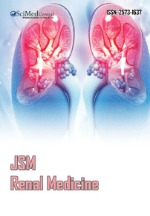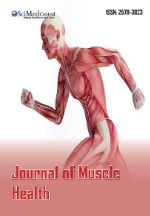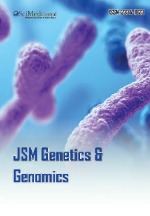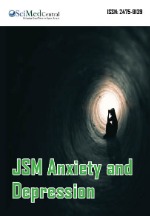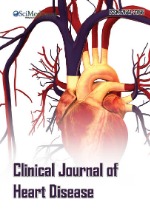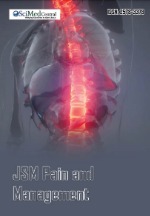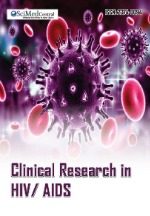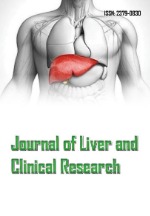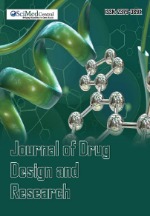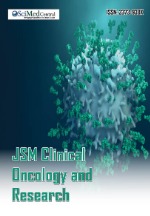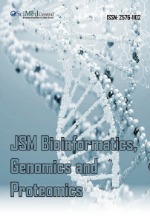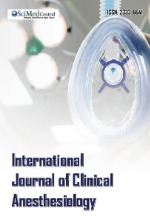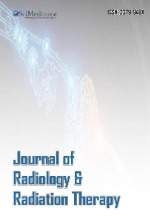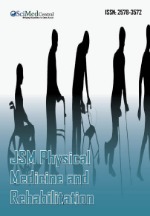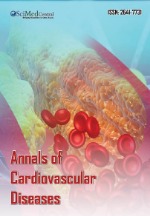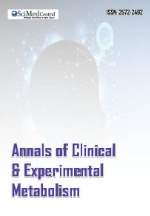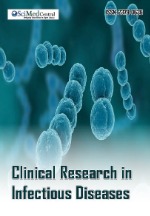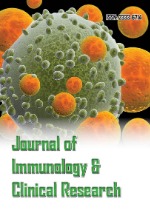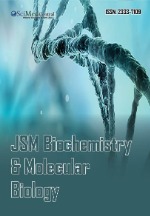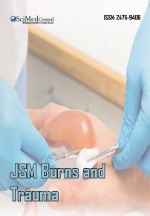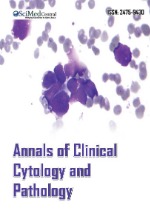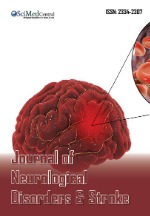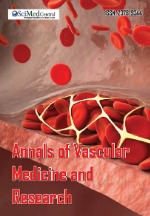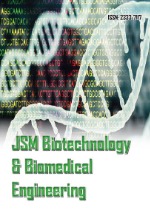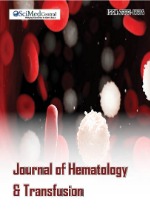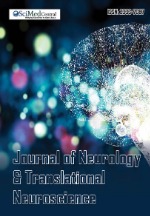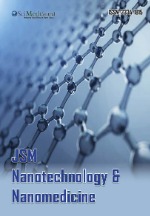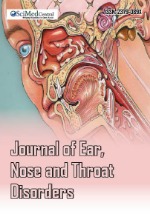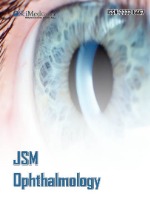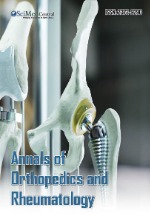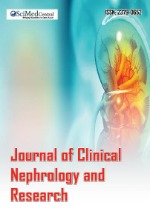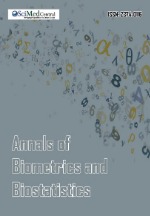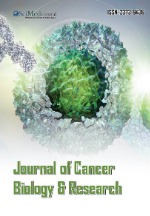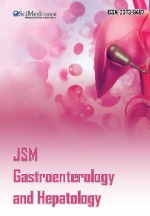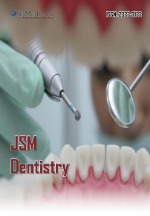Cystic Pheochromocytoma a Rare Form of Adrenal Pheochromocytoma Associated With Multiple Endocrine Neoplasia Syndrome: Case Report
- 1. Department of Urology B, Avicenne Hospital, University Hospital Center IBN SINA, University Mohammed V, Morocco
KEYWORDS
- Adrenal Medulla
- Cystic Pheochromocytoma
- Multiple Endocrine Neoplasia Type IIa
- Pheochromocytoma
CITATION
Ilyass Z, Ayoub M, Eddine OZ, Amine S, Tariq K, et al. (2025) Cystic Pheochromocytoma a Rare Form of Adrenal Pheochromocytoma Associ- ated With Multiple Endocrine Neoplasia Syndrome: Case Report. J Urol Res 12(1): 1159.
ABBREVIATIONS
MEN: Multiple Endocrinne Neoplasia, MTC: Medullary Thyroid Carcinoma,RET : Rearranged During Transfection, MIBG: Meta-Iodobenzyl-Guanidin Gammagraphy, UCG: ultrasound scan, CT: Computed Tomography, PASS: Adrenal Gland Scaled Score
INTRODUCTION
Pheochromocytoma is an adrenal tumor originating from the chromaffin cells in the adrenal medulla and produces catecholamine [1]. While the majority of pheochromocytomas occur in the adrenal, 10% are extra- adrenal. The majority of pheochromocytomas manifest as a single tumor, unilateral in nature, and occur infrequently. Pheochromocytomas exhibit a family disease-like characteristic in about 10% of cases. The majority of these tumors are associated with multiple endocrine neoplasia, which can include type 1 neurofibrillomatosis, von Hippel-Lindau syndrome, or MEN 2 syndrome. Despite being uncommon lesions, the syndromes have an annual incidence of significantly less than 1 in 100,000 people [2]. Cystic pheochromocytomas are uncommon, whereas cystic adrenal lesions are frequently seen. Pheochromocytoma diagnosis should be taken into consideration when a patient with Multiple Endocrine Neoplasia Syndrome (MEN) has a cystic adrenal tumor [3].
Very few cases of Multiple Endocrine Neoplasia 2A (MEN 2A) with cystic PHEO and Medullary Carcinoma of the Thyroid (MTC) are reported in the literature. We report the case of a patient diagnosed with cystic pheochromocytoma in the context of multiple endocrine neoplasia.
CASE REPORT
24-year-old patient, with a family history of Multiple Endocrinne Neoplasia syndrome (MEN), the father, brother and 2 paternal aunts, diagnosed with multiple endocrine neoplasia syndrome during genetic screening revealing a mutation in the RET gene. Clinically the patient presents a Menard’s triad made up of throbbing headaches, tachycardia and night sweats without high blood pressure.
An Assessment of the Extension of Men has found:
- Adrenal Pheochromocytoma: Biologically: Métanephrine x3N, Normétanéphrine x1.1N.
CT scan: A cystic mass of the left adrenal without invasion of adjacent structures, measuring 33 x 32mm (Figure 1).
Figure 1: Plain CT scanning of the adrenal gland shows Cystic mass of the external arm of the left adrenal, oval, with clear limits of regular contours, cystic density, not enhanced after injection of contrast product measuring 33 x 32mm. Without invasion of adjacent structures.
- Medullary Thyroid Carcinoma (MTC): Biologically: Calcitonin: 49ng/ml.
- Cervical Ultrasound: Hypoechoic mid-lobar thyroid nodules with irregular contours with micro calcification, measuring 8mmx5mm, classified EU-TIRADS 5 (Figure 2A).
Figure 2 A: Hypoechoic right midbar nodule with irregular contours measuring 8mm x 4.5mm with microcalcifications, classified EU TIRADS5. B: Left posteroinferior parathyroid adenoma, hypoechoic hypervascularized on Doppler measuring 9mm x 15mm.
- Hyperparathyroidism: Biologically: Parathormone x3N.
-
Cervical Ultrasound: Left posteroinferior parathyroid nodule (Figure 2B).
-
Complication of Hyperparathyroidism: right kidney stone measuring 28mm (Figure 3).
-
Figure 3: Right kidney stone measuring 28mm.
Multiple Endocrine Neoplasia Syndrome Type 2a (MEN2a) was diagnosed based on Medullary Thyroid Cancer (MTC) associated with hyperparathyroidism and pheochromocytoma. A planned multidisciplinary care includes a ceolioscopic adrenalectomy firstly, a total thyroidectomy and resection of the parathyroid adenoma secondly, and management of pyelic stones later.
Pathologic Evaluation: At gross analysis, the surgical specimen weighing 23g (Figure 4) and measuring 70 x 100 x 10mm. At sectioning, presence of a nodule measuring 35 x 30 x 15mm, with a well-defined yellowish gray appearance.
Figure 4: The surgical specimen measuring 70mm x 100mm x 10mm.
- Microscopic examination revealed that the mass was occupied by an encapsulated tumor proliferation organized into cords and nests. The tumor cells are polygonal, with abundant eosinophilic cytoplasm and rounded nuclei, with fine chromatin, nucleolated in places, mitoses are very rare (Figure 5).
- Figure 5: Polygonal tumoral cells with abundant granular cytoplasm and prominent nucleoli (Hematoxylin and Eosin, 400×).
- Absence of necrosis, vascular emboli or invasion of the capsule. The final pathologic diagnosis was non-aggressive cystic pheochromocytoma PASS score estimated at 3.
DISCUSSION
MEN 2A is an autosomal dominant syndrome involving multiple endocrine glands. It is characterized by MTC, pheochromocytoma, and hyperparathyroidism. MTC occurs in nearly all MEN 2A patients and is generally the first manifestation of MEN2A, whereas pheochromocytoma and hyperparathyroidism occurs in 30%–50% and 20% of MEN 2A patients, respectively [4,5]. Hyperparathyroidism is mainly due to diffuse hyperplasia of the parathyroid glands and not to adenoma. The syndrome affects all ages and both sexes with equal frequency. Genetic testing can detect missense mutation of RET proto-oncogene, which makes it a reliable method to diagnosis MEN 2A [6].
However, we could not perform this test because of technical limitations. MTC tumor cells can produce many biochemical substances, such as calcitonin, adrenocorticotropic hormone, histamine, and carcinoembryonic antigen. Calcitonin is a specific tumor marker which is critical in the diagnosis of MTC as well as in determining whether the tumor has been completely excised and in monitoring of tumor recurrence [7-8]. Generally, serum calcitonin levels of MTC patients are higher than normal [9].
Pheochromocytomas are adrenal medullary neoplasia that secrete catecholamines responsible for numerous symptoms, the most common of which are headaches, excessive perspirations and palpitations. Hypertension, whether paroxysmal or sustained, is characteristic and is present in up to 90%-95% of patients with pheochromocytoma. Our patient did complain of some of the above symptoms but did not have any episodes of hypertension pre- operatively. Cystic degeneration of the tumour could have led to loss of sustained secretive function and hence, the absence of documented pre- operative hypertension [3]. The detection of serum calcium and parathyroid hormone can improve the detection rate of MEN 2A [10].
After confirmation of an increased hormonal activity we search for a hyperpoductive tumor in the adrenal medulla or rarely in sympathetic ganglia. The USG examination is only indicative also in the case of a positive finding asi t has a low sensitivity and specificity. The gold standard is a CT scan. MRI has a higher specificity than CT scan. A valuable method is meta-iodobenzyl- guanidin gammagraphy - MIBG which confirms whether a randomized or targeted tumor produces catecholamines. It is mainly used for suspicion of disease dissemination or unusual tumor localization. PET CT (6-18F-Dopa) has a 94 % sensitivity and 100 % specificity [2].
The differential diagnosis of cystic adrenal lesions includes adrenal cyst, pseudocyst, adrenal carcinoma, and pheochromocytoma [11,12]. Benign and malignant pheochromocytomas are indistinguishable at histologic analysis. Benign lesions can be locally invasive, invading adjacent structures such as the inferior vena cava or renal capsule. Malignancy in adrenal pheochromocytomas is present in up to 10% of cases [13]. Currently, there are no clear predictive markers or features and only the presence of clinical metastases define a malignancy. Previous initial reports attempted to predict malignancy by size, setting 6cm or larger as increased risk for malignancy [14]. Thompson compared the histological features of 50 benign pheochromocytomas with 50 malignant ones [15]. They described histological findings, such as invasion, necrosis, atypical or increased mitotic figures, large nests of diffuse growth, nuclear pleomorphism and others that were more commonly found in malignant tumours. They weighted each characteristic to create the Pheochromocytoma of the Adrenal Gland Scaled Score (PASS) and noted that more biologically aggressive tumours all had a PASS of ≥4 (out of 20). In our case the patient presents a non-aggressive cystic pheochromocytoma PASS score estimated at 3.
Surgical excision is the main mode of management of MEN 2A patients. Pheochromocytoma should be excised initially in those patients with simultaneous MTC and pheochromocytoma [16]. Laparoscopic adrenalectomy is currently the method of choice. Management of MEN 2A patients include total thyroidectomy with bilateral lymph node dissection should be carried out and the parathyroid glands should be explored at the same time. Prognosis of MEN 2A is primarily dependent upon the staging of MTC [17]. Therefore, it is very important to monitor serum calcitonin regularly. It is recommended that serum calcitonin should be examined 1, 3, 6, and 12 months after initial thyroidectomy and twice a year thereafter. B-mode ultrasonography or CT examination of the neck should be performed once a year to find the recurrence and metastasis of MTC and the prognosis of MEN 2A timely.
CONCLUSION
In conclusion, MEN 2A can be diagnosed by biochemical, tests Genetic examination will help to identify those patients who require monitoring rather than immediate surgical treatment. Surgical excision is the predominant way to treat MEN 2A and pheochromocytoma should be excised at first when pheochromocytoma and MTC occur simultaneously.
REFERENCES
- Zelinka T, Eisenhofer G, Pacak K. Pheochromocytoma as a catecholamine producing tumor: Implications for clinical practice. Stress. 2007; 10: 195-203.
- Breza JJr, Breza JSr, Multiple endocrine neoplasia 2A (MEN 2A) syndrome Bratisl Med J. 2018; 119 :120-125.
- Stan FL, Tan YM, Lim DTH, The significance of cystic adrenal lesions in multiple endocrine neoplasia IIB syndrome , SingaporeMedJ. 2004; 45: 494
- Quayle FJ, Fialkowski EA, Benveniste R, Moley JF: Pheochromocytoma penetrance varies by RET mutation in MEN 2A. Surgery. 2007; 142: 800-805.
- Akerstrom G, Stalberg P, Surgical management of MEN-1 and −2: state of the art. Surg Clin N Am. 2009; 89: 1047-1068.
- Noll WW, Utility of RET mutation analysis in multiple endocrine neoplasia type 2. Arch Pathol Lab Med. 1999; 123: 1047-1049.
- Hahm JR, Lee MS, Min YK, Lee MK, Kim KW, Nam SJ, et al. Routine measurement of serum calcitonin is useful for early detection of medullary thyroid carcinoma in patients with nodular thyroid diseases. Thyroid. 2001; 11: 73-80.
- Tavares MR, Toledo SP, Montenegro FL, Moyses RA, Toledo RA, Sekyia T, et al. Surgical approach to medullary thyroid carcinoma associated with multiple endocrine neoplasia type 2. Clinics (Sao Paulo). 2012; 67: 149-156.
- Dora JM, Canalli MH, Capp C, Puñales MK, Vieira JG, Maia AL, Normal perioperative serum calcitonin levels in patients with advanced medullary thyroid carcinoma: case report and review of the literature. Thyroid. 2008; 18: 895-899.
- MacKenzie-Feder J, Sirrs S, Anderson D, Sharif J, Khan A, Primary hyperparathyroidism: an overview. Int J Endocrinol. 2011; 2011: 251410.
- KlinglerPJ, FoxTP, MenkeDM, KnudsenJM, Fulmer JT. Pheochromocytoma in an incidentally discovered asymptomatic cystic adrenal mass. Mayo Clin Proc. 2000; 75: 517-520.
- Rozenblit A, Morehouse HT, Amis ES. Cystic adrenal lesions: CT features. Radiology. 1996; 201:541-548.
- Szalat A, Fraenkel M, Doviner V, Salmon A, Gross JD. Malignant pheochromocytoma: predictive ,factors of malignancy and clinical course in 16 patients at a single tertiary medical ,center. Endocrine. 2011; 39: 160-166.
- Arcos CT, Luque Vr, Luque JA, García PM, Jiménez AB, Muñoz MM. Malignant giant pheochromocytoma: a case report and review of the literature. Can Urol Assoc J. 2009; 3: 89-91.
- Thompson LD. Pheochromocytoma of the Adrenal gland scaled score (PAss) to separate benign from malignant neoplasms: a clinicopathologic and immunophenotypic study of 100 cases. Am J Surg Pathol. 2002; 26: 551-66
- Kun-Long Tang, Yi Lin & Li-Ming Li Diagnosis and surgical treatment of multiple endocrine neoplasia type 2A. World Journal of Surgical Oncology. 2014; 12: 8
- Sanso GE, Domene HM, Garcia R, Pusiol E, de M, Roque M, et al. Very early detection of RET proto-oncogene mutation is crucial for preventive thyroidectomy in multiple endocrine neoplasia type 2 children: presence of C-cell malignant disease in asymptomatic carriers. Cancer. 2002; 94: 323-330.







